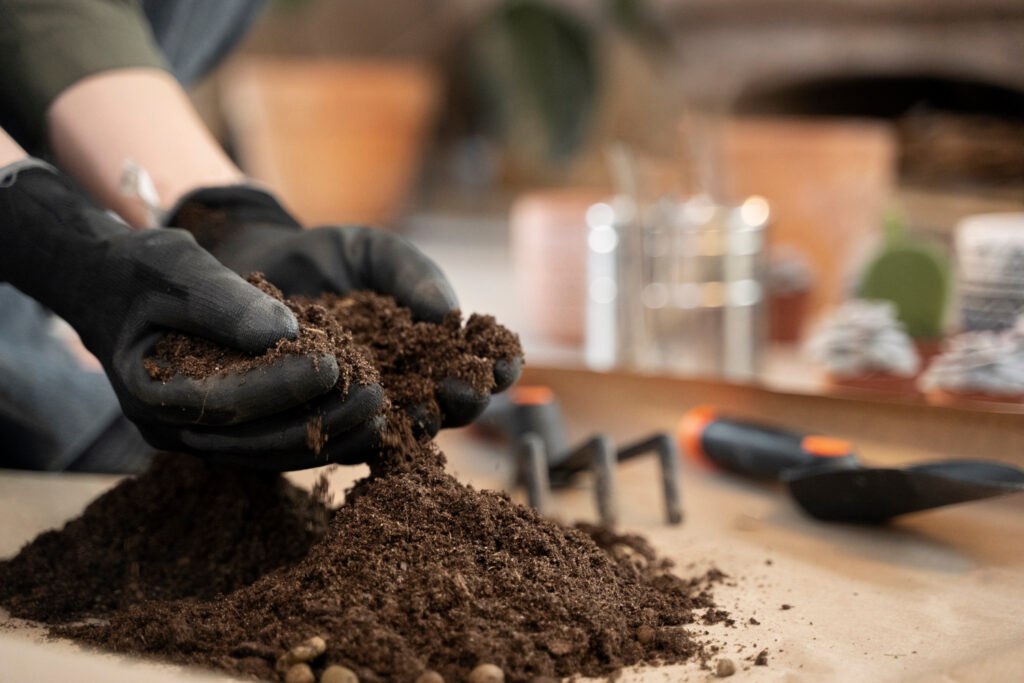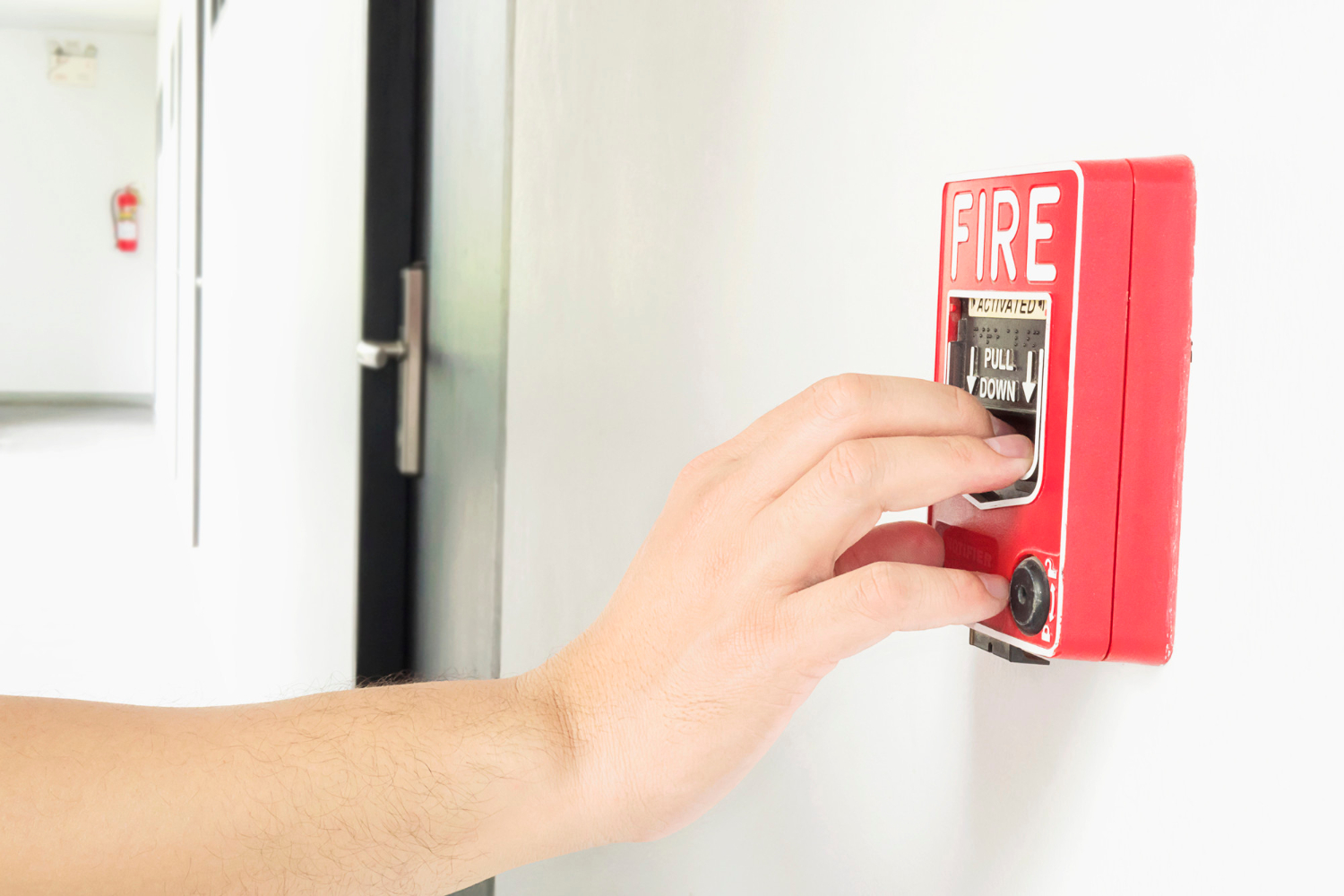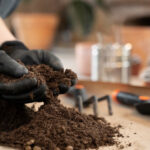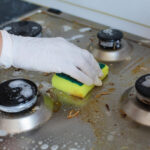Now Reading: Small Repair Hacks Every DIY Lover Should Know
-
01
Small Repair Hacks Every DIY Lover Should Know

Small Repair Hacks Every DIY Lover Should Know
The Joy (and Chaos) of Small Repair Hacks
Here’s the thing about home ownership or even renting—you become the unofficial maintenance crew. One day it’s a leaky faucet, the next it’s a drawer that refuses to slide smoothly. And when your plumber ghosts you (again), you learn that life’s greatest survival skill might just be a small repair hack.
That’s what this guide is all about—those quick, slightly ridiculous, often brilliant small repair hacks that save your weekend and your wallet. With the right tools, a splash of humor, and maybe a rust preventing pouch for your gear, you can turn your garage into a mini workshop that could impress any seasoned handyman.
Why Small Repair Hacks Matter
Every home has a secret personality—it sighs, leaks, creaks, and sometimes cries for help. Ignoring these small issues turns them into big, expensive problems. Learning small repair hacks means gaining independence from waiting days for a technician to tighten a screw or silence that haunted door hinge.
Let’s be honest, most repairs aren’t rocket science—they just need patience, the right tools, and a touch of DIY spirit. From quick repairs to clever hacks, you’ll learn that easy DIY repairs can be oddly satisfying.
The Must Have Tools for Small Repair Hacks
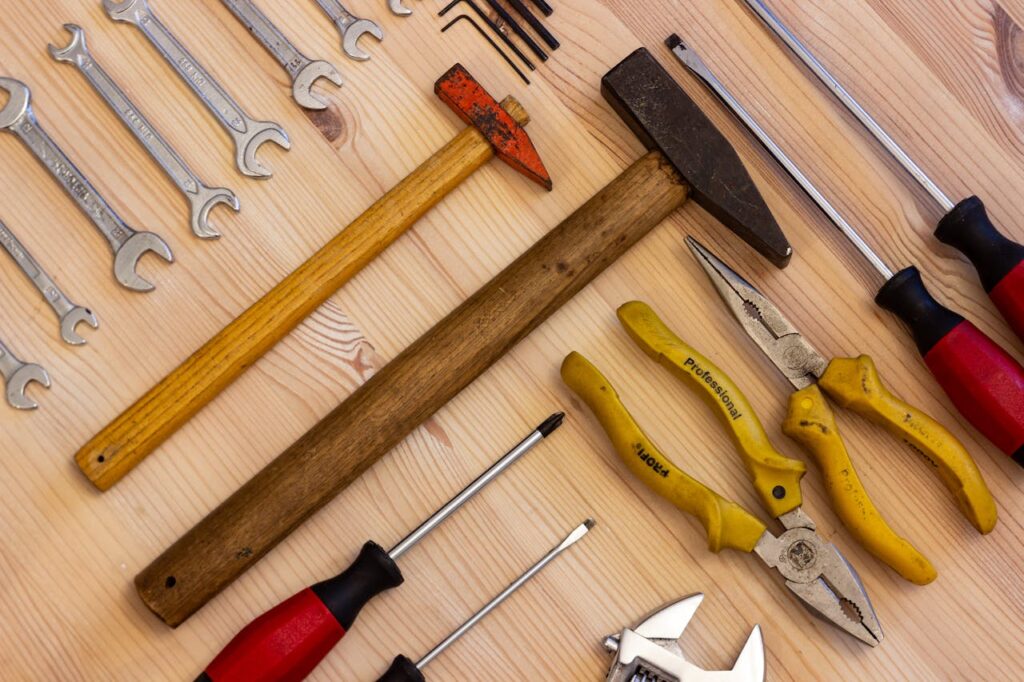
The Mighty Toolbox
You can’t perform DIY home repairs without a reliable lineup of basic tools. Think of it as your superhero belt—each tool has a job, and when combined, they can conquer any small issue.
- Screwdrivers & Screws – Keep both Phillips screwdrivers and flat heads handy. You never know which screw grip will save you from a wobbling chair.
- Cordless drill & different drill attachments – The cordless version saves time and lets you move freely, especially during small construction jobs or small projects.
- Utility knife – A sharp utility knife or simple cutter makes trimming pipe insulation or cutting adhesive a breeze.
- Hammers & nail pullers – Whether you’re hammering in tiny nails or prying out old ones, a good hammer and pry bar are musts.
- Hacksaw – For those times you need to cut through machine screws or slippery logs without calling in a lumberjack.
- Mini flashlight or key chain size flashlight – Because urgent fixes always seem to happen in the dark.
Real Life Small Repair Hacks That Actually Work
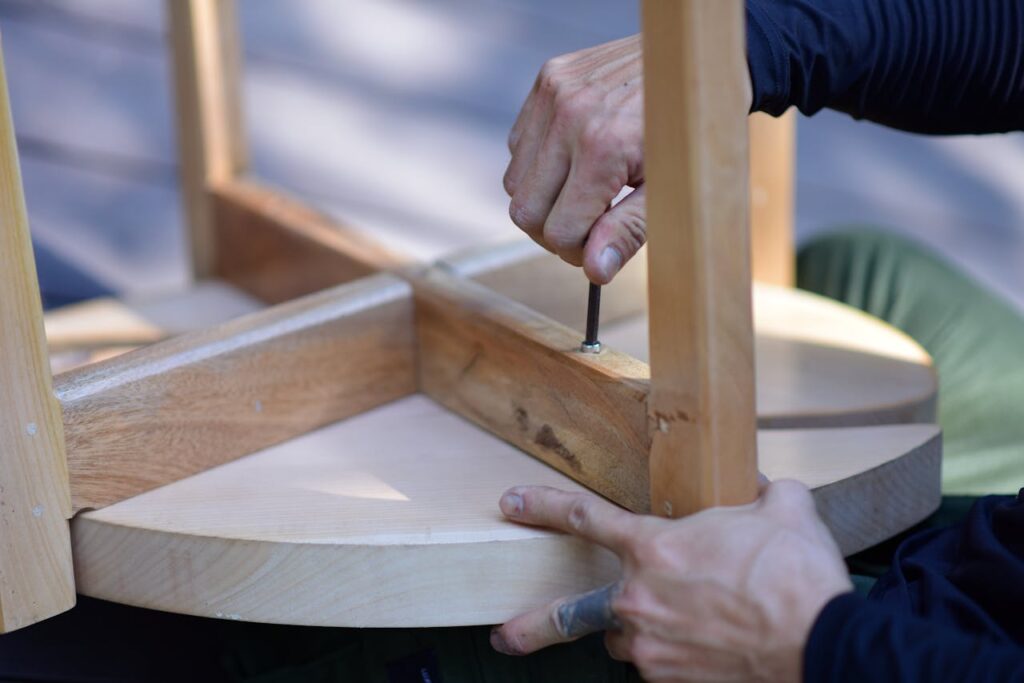
The Screwdriver Hack That Saved My Sanity
Once, while putting together a new cutting board stand, I realized I was missing the one socket I needed. Enter the screwdriver hack: wrap a bit of tape around the screwdriver tip for extra grip. It worked perfectly. Who knew a roll of tape could fix a bad machine screw day?
Patch the Wall Wound
Got a drywall dent that looks like your wall picked a fight? You don’t need a full remodel—just grab a drywall repair kit, a bit of patching material, and your hand tools. Smooth it out, let it dry, and boom—no more wall wound.
The Bungee Cord Miracle
Ever tried juggling long handle tools in your garage? Use bungee cords to create vertical storage. Stretch them across a wall and slip tools like rakes or hammers between them. It’s like a tool holster for your workshop—and yes, it looks impressively organized.
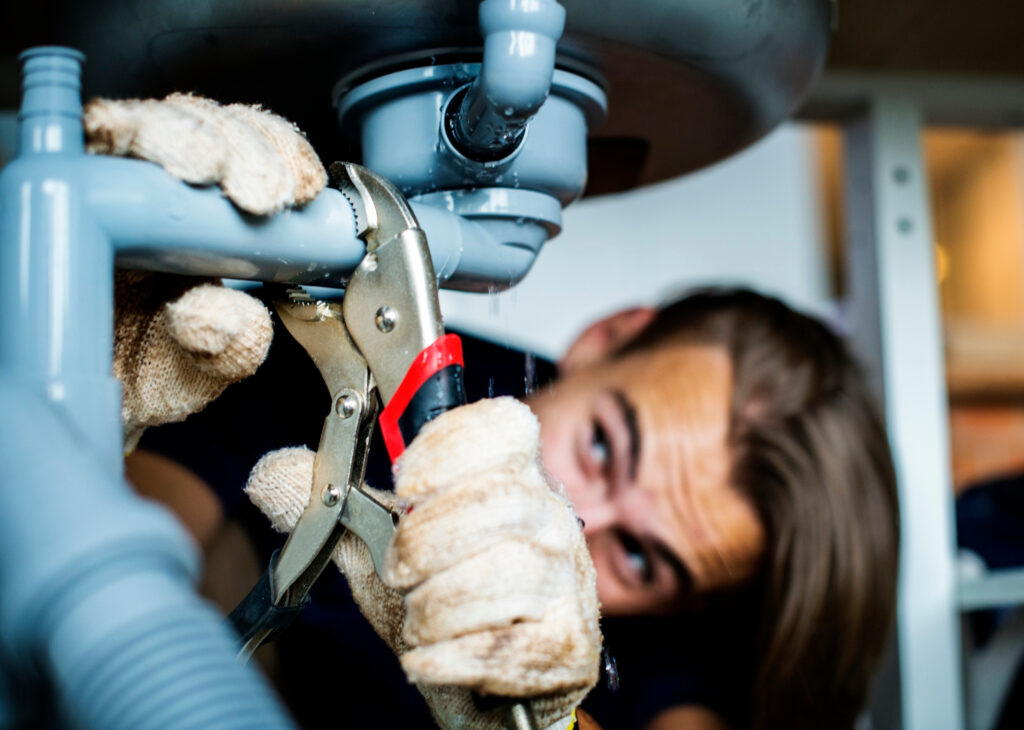
Electrical & Plumbing Quick Fixes
The Leaky Faucet Blues
A leaky faucet is more than annoying—it’s a test of patience. Turn off the circuit breaker (safety first), slip on your old work gloves, and use a screwdriver to tighten the nozzle or replace a worn adhesive washer. Congratulations—you’ve just performed a mini plumbing miracle.

Live Wires and Low Voltage Wisdom
When dealing with live wires or low voltage wire, always wear safety glasses and double check your electrical box cover. Keep phone cords and electrical cords neatly tied with bungee cords or a rust preventing pouch to avoid tangles.
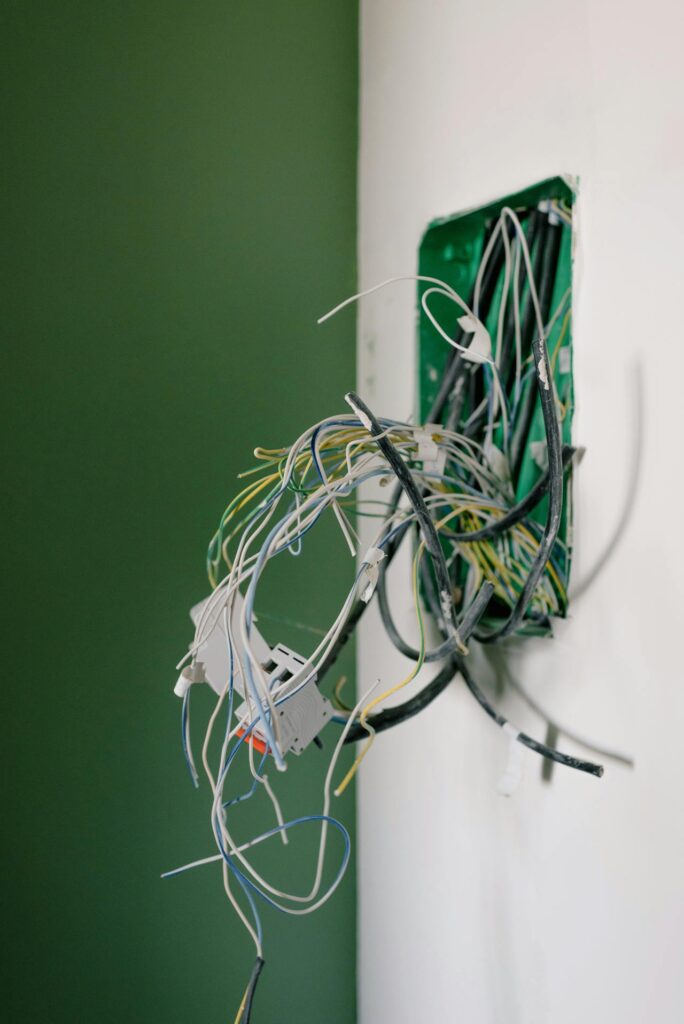
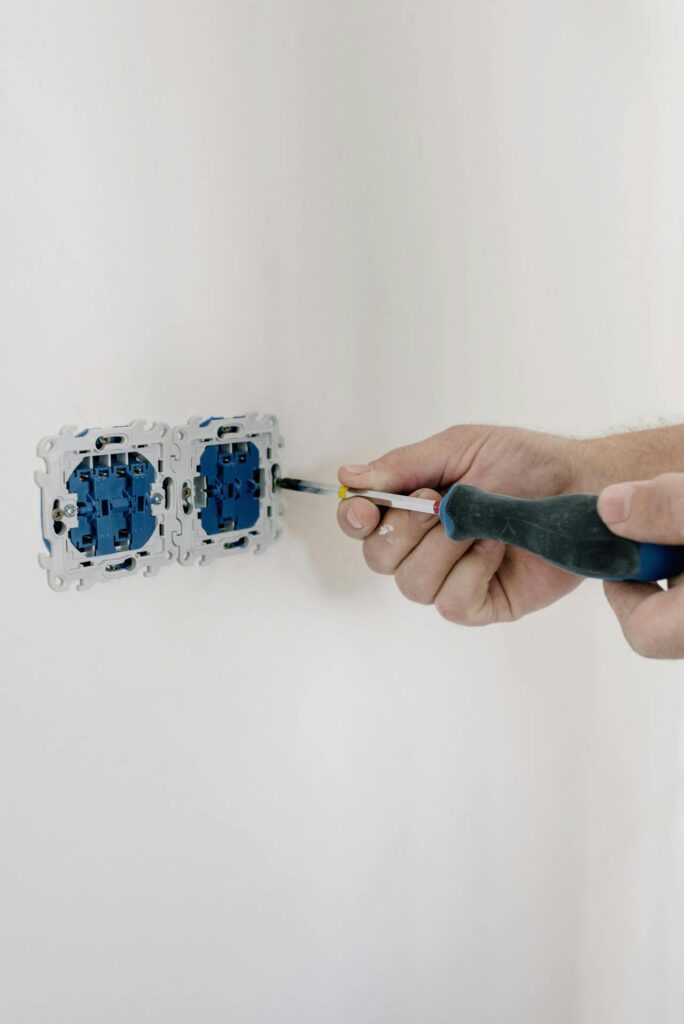
Clever Hacks for Small Spaces and Urgent Fixes
Drawer Drama Solved
Got a sticky drawer that won’t open smoothly? Rub a little scrap wood or wax on the slides. It’s like moisturizer for furniture. A quick wipe, and it’ll glide open smoother than your morning playlist.
Glued Joints and Handy Hints
For glued joints that won’t stay put, use a dab of adhesive plus a clamp (or heavy cutting board if you’re improvising). If you accidentally overdo it, scrape off the excess with a knife or simple cutter before it sets.
Tiny Nails, Big Problems
When tiny nails slip through your fingers, press them into a piece of tape to hold them steady. It’s the unsung hero of handy hints for small repairs—no more nail on the floor (or in your foot).
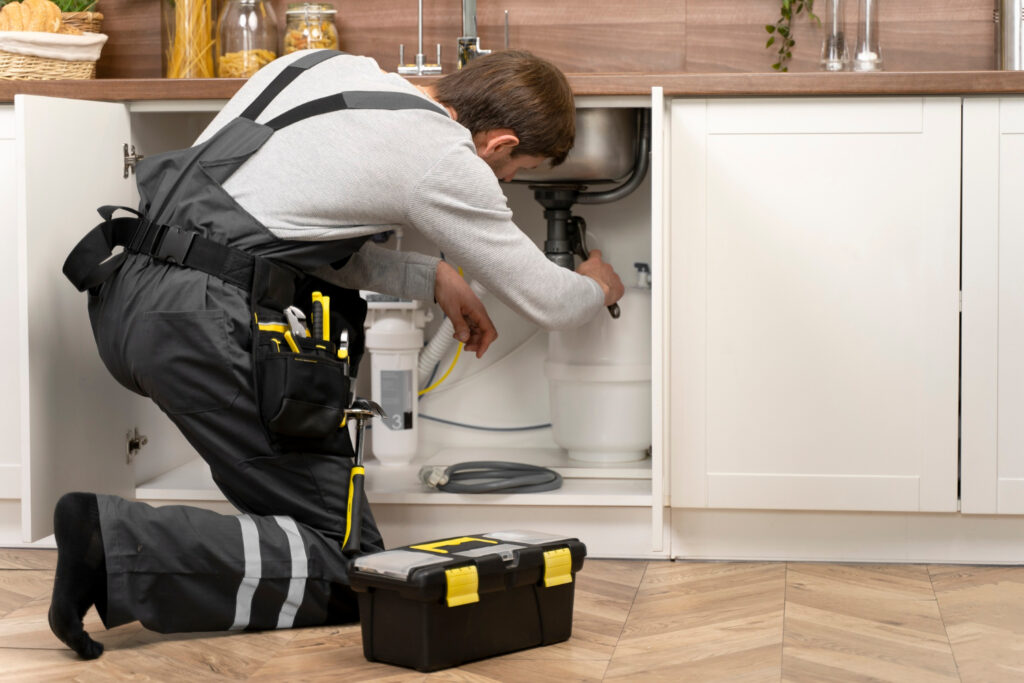
You might also like these life hacks:
1. When your snacks keep playing hide and seek, it’s time to try Pantry Organization Hacks That Actually Work before the cookies disappear again.
2. You don’t need to summon rain gods when Smart Rainwater Harvesting Tips for Every Home can make your garden thrive and your bills shrink.
3. If your windowsill looks lonely, Herb and Vegetable Growing Indoors Like a Pro will turn it into a mini jungle that smells like victory (and basil).
4. For those who prefer watching grass grow over mowing it, Lawn Care Shortcuts: Smart Tricks for Lazy Perfection is basically your new life manual.
5. When your home decor dreams meet your budget reality, Easy Home Decor Hacks That Actually Work swoops in like a stylish superhero with a glue gun.
Tool Tips and Cool Tool Hacks
The Screw That Won’t Stay
When an often used screw keeps falling out, try wedging a bit of pipe insulation or tape into the hole before reinserting it. This adds resistance and gives your screw grip some extra muscle.
Cool Tool Hacks from the Garage
Keep your fancy hand tools in a top tool storage rack lined with old work gloves to prevent scratching. Store your permanent sockets, pry bars, and nails in labeled jars—it looks organized and saves hours of digging when an urgent fix calls.
Handy Holster for Mini Flashlights
Use bungee cords to make a hanging holster for your mini flashlights. When the power goes out, you’ll actually know where they are (for once).
Head Scratching Home Improvement Moments

Everyone has that one project that went hilariously wrong. My personal best? Trying to repair a small hole in the wall and accidentally drilled into a water pipe. Lesson learned: know what’s behind the wall before you start showing off your skills.
These moments are what make small repair hacks so human. They teach us to laugh, learn, and maybe label the drill press table before making our next move.
Keeping Your Tools (and Sanity) in Order
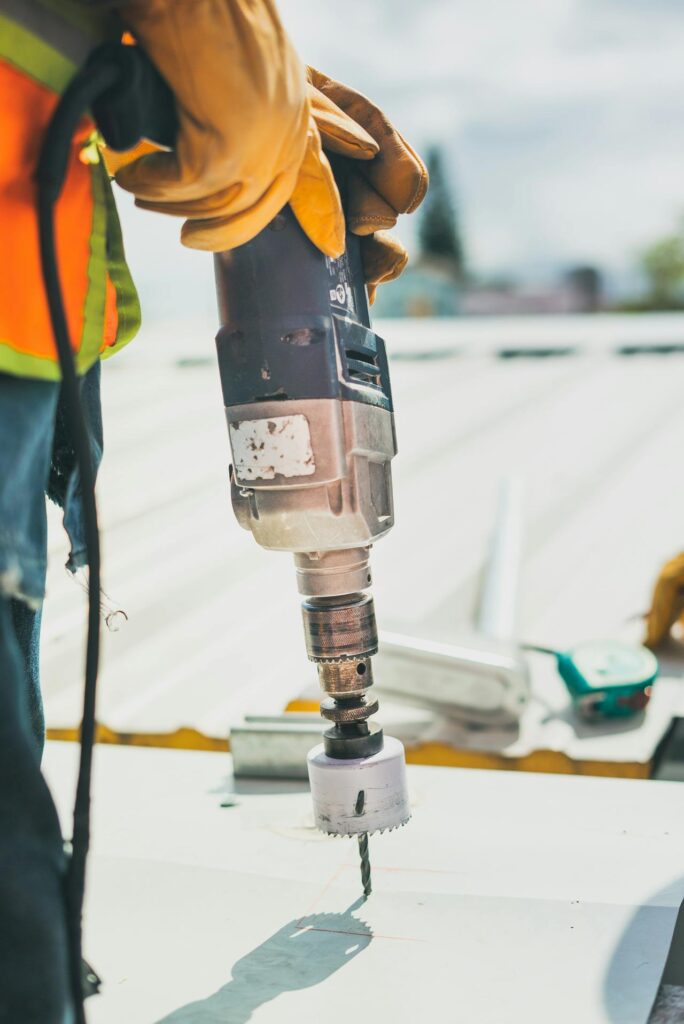

A chaotic garage leads to chaotic repairs. Organize your tools by type—keep screwdrivers, hammers, and hand tools together, cords neatly wrapped, and sockets sorted. Hang your long handle tools using hooks or bungee cords, and don’t forget to store your rust preventing pouch somewhere dry.
The DIY Mindset – From Fixes to Confidence
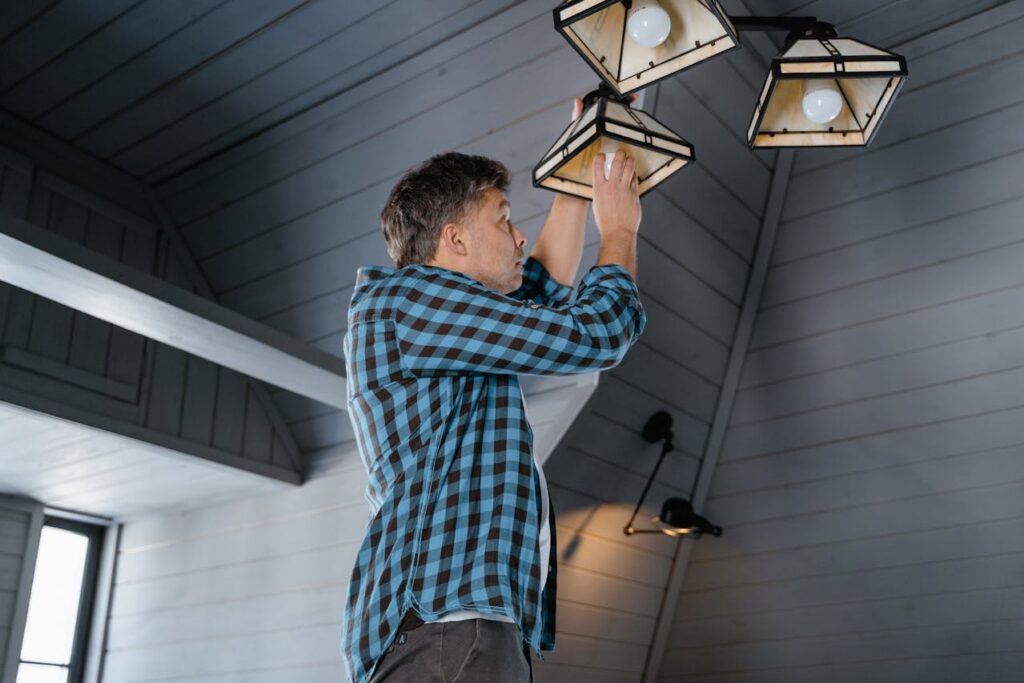
Here’s the real secret: small repair hacks aren’t just about repairs. They’re about confidence. The moment you fix a drawer, patch a wall, or silence a squeaky hinge, you realize you’re capable of more than you thought.
With every hack, you’re learning skills that make your home feel more your own. Whether it’s repairing drywall, tightening machine screws, or finding handy tool tricks, you’re not just improving your house—you’re building self reliance.
Final Handy Hints for Happy Repairing
- Always wear safety glasses when you drill, saw, or hammer.
- Label cords, sockets, and tools for faster finds.
- Keep adhesive, tape, and cutting boards nearby for improvising.
- Never underestimate the power of a good hammer.
- And when all else fails—add a little duct tape and call it “modern art.”
Bonus Round: Tiny Fixes, Big Satisfaction
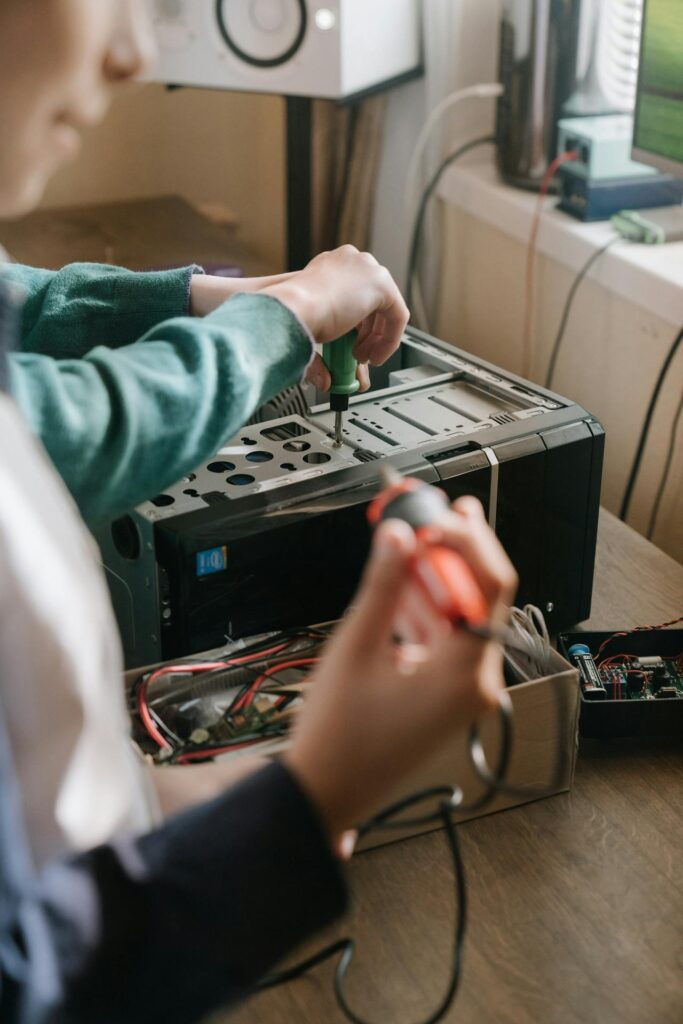
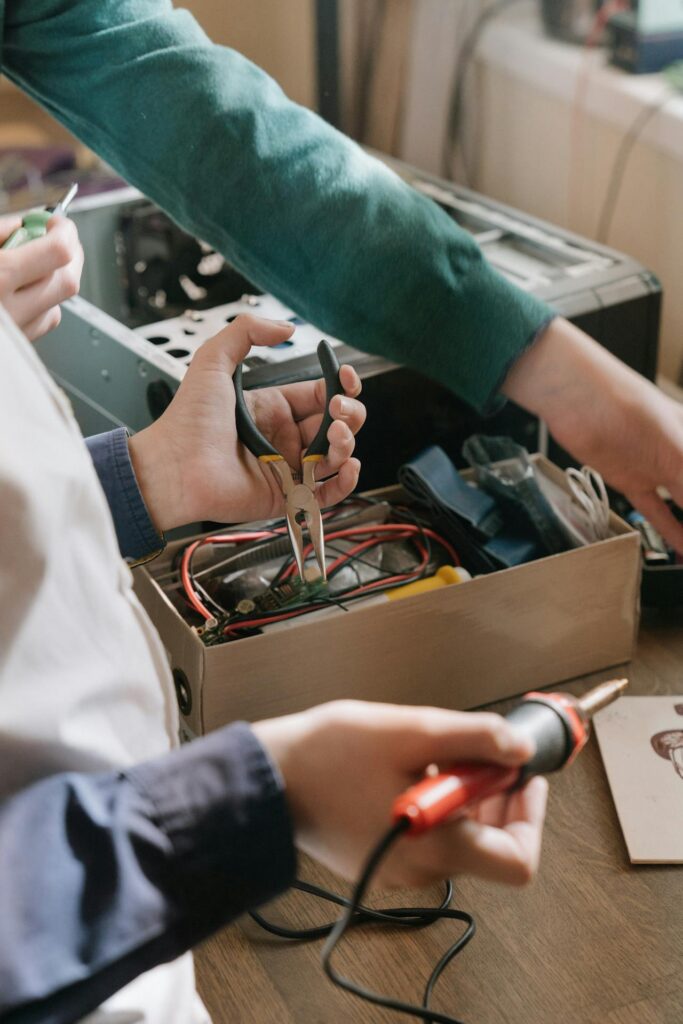
Even after you’ve built a mountain of DIY repairs, patched every wall wound, and labeled every tool, there will still be a few sneaky small items begging for attention. These are the “blink and forget” jobs that quietly mock your skills until you deal with them.
The Attack of the Phone Cords
Let’s talk about phone cords that twist into knots worthy of a magician’s act. Wrap them with pipe insulation to stop the tangles. Bonus: it looks weirdly professional, like your cord went to finishing school.
The Electrical Box Cover That Plays Hide and seek
Ever notice how electrical box covers vanish just when you need them? Keep a spare or two in your garage (labelled, if you’re fancy). A quick swap saves you from staring at mysterious live wires during your next head scratching home improvement session.
The Rake That Refuses to Behave
If your rake keeps falling every time you breathe, mount a short bar on the wall and loop a bungee cord over its handle. It’s the gardening version of a holster, and it prevents you from accidentally reenacting an old cartoon gag where tools attack you.
The Case of the Glued Drawer
You know those glued joints on old furniture that just… give up? Inject a little adhesive with a syringe nozzle and clamp it with your cutting board overnight. Voila — your drawer is back in business and ready to hold more useless coupons.
The Forgotten Scrap Wood Hero
Doesn’t toss scrap wood? Use it to test drill depths before the real job or to protect surfaces while hammering. If nothing else, it makes you look like the kind of person who “knows what they’re doing,” which—let’s be honest—half of DIY is pretending convincingly.
The Duct Tape Renaissance
Let’s not forget the little duct tape trick. It’s the Swiss Army knife of small repair hacks—great for sealing damage, patching small holes, or holding together your dignity during small projects gone wrong.
Final Handy Hint: Keep It Simple
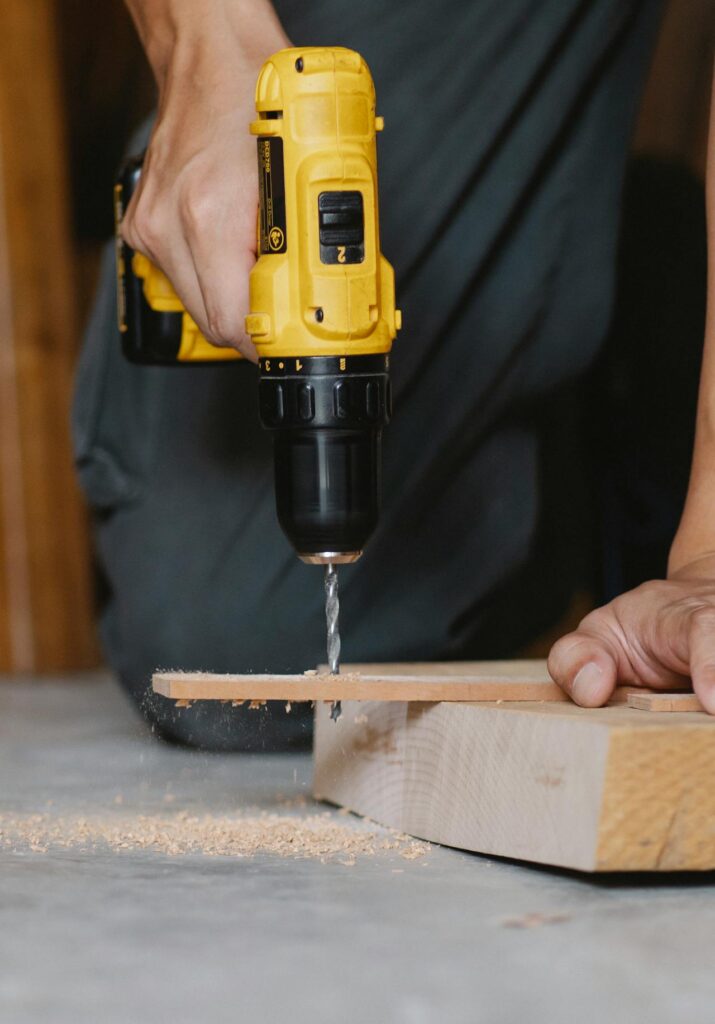
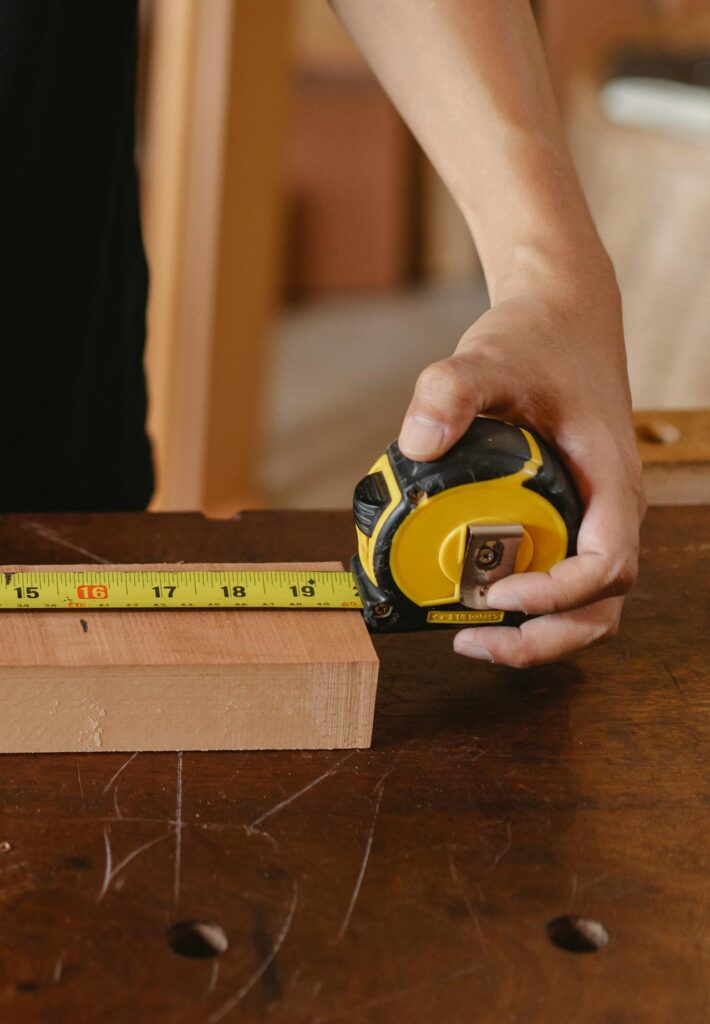
You don’t need a drill press, blank steel, or a machine worthy of NASA. Most small repairs only demand a handy tool, a pinch of patience, and a sense of humor that can survive the sight of a crooked nail.
So next time something falls apart, grab your tool, crack a smile, and whisper those magic words: “I saw this on YouTube—how hard can it be?”
The Power of Small Repair Hacks
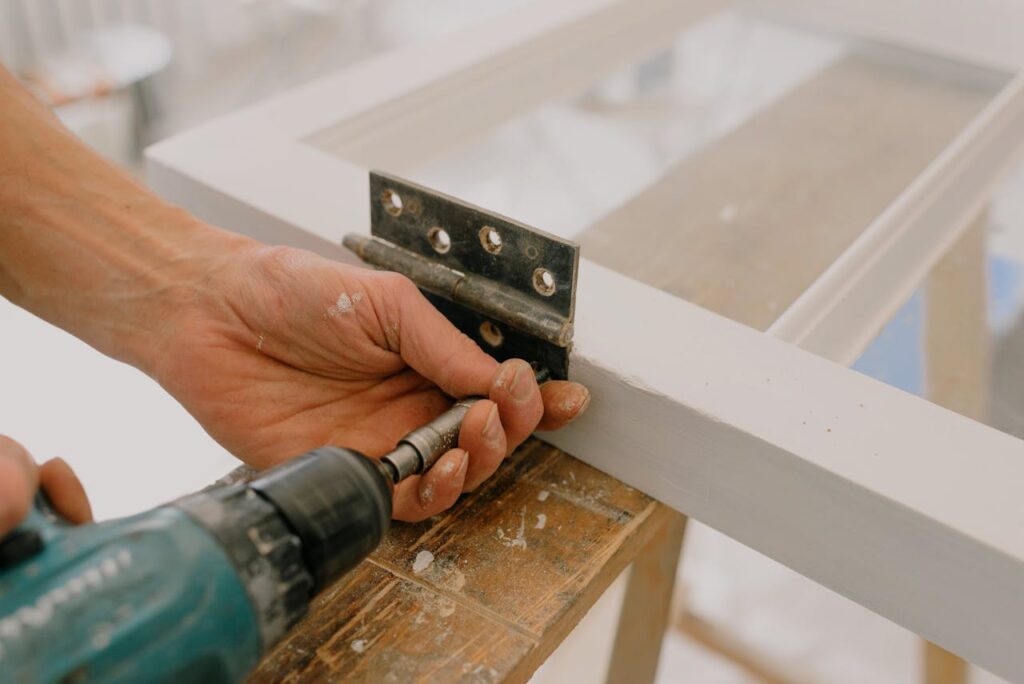
In the end, small repair hacks are what make home life manageable—and surprisingly fun. Whether you’re fixing small holes, dealing with a stubborn screw, or experimenting with cool tool hacks, remember that every fix counts.
You don’t need a machine or fancy system, just creativity, a few handy hints, and the right tools. Keep your mini flashlights charged, your drywall repair kit close, and your humor intact. Because every head scratching home improvement project deserves a happy ending—and a laugh.
Happy repairing!
FAQ: Because Every Small Repair Hack Deserves a Laugh
Q1: What are some must have tools for mastering small repair hacks?
Let’s start with the holy trinity of small repair hacks—a good hammer, a cordless drill, and a roll of tape that sticks harder than your New Year’s resolutions. Add in a few machine screws, a simple cutter, and safety glasses (because no one looks cool squinting at flying nails). Throw these in your toolbox, and you’re halfway to “handy hero” status.
Q2: Can small repair hacks really fix major problems?
Here’s the truth: small repair hacks are great for small issues—like a wobbly drawer, a leak, or a squeaky door. But if your ceiling starts raining or your circuit breaker looks like it’s plotting revenge, call a pro. These hacks are meant for quick repairs, not rerouting live wires. Know your limits before your house starts trending on “DIY Gone Wrong.”
Q3: How do I stay organized while doing small repairs?
Easy. Turn your garage into a shrine of order. Hang your long handle tools with bungee cords, keep nails, sockets, and screwdrivers labeled, and store your hand tools in a rust preventing pouch. If you can find your pry bar faster than your car keys, you’ve achieved enlightenment in the DIY world.
Q4: What if I don’t have fancy tools like a drill press or power machine?
Relax. Small repair hacks don’t need a machine that hums like a spaceship. Most diy home repairs can be handled with basic tools—a hammer, utility knife, and screwdriver will do the trick. For anything requiring a drill press table, just borrow one from a friend who collects fancy hand tools (they’ll be thrilled someone finally asked).
Q5: How do I repair small drywall damage without making it worse?
Ah, the classic wall wound. You’ll need a drywall repair kit, some patching material, and the courage to admit you once hung that picture frame a little too enthusiastically. Smooth it, sand it, and paint it. And if it looks bad afterward, call it “textured art.”
Q6: What’s the funniest small repair fail you’ve seen?
Once, I watched a friend try to fix a drawer with glued joints using cooking oil instead of adhesive. The drawer slid beautifully… until it fell apart 30 minutes later. Moral of the story? Small repair hacks work best when your adhesive isn’t edible.
Q7: Are there any hacks to make my tools last longer?
Absolutely. Wipe down your tools after each use, keep your cords untangled, and store your sockets in a rust preventing pouch. For bonus points, hang your mini flashlights in a handy holster so they don’t disappear during urgent fixes. A little care today saves a lot of repairs tomorrow.
Q8: What’s the best way to handle small electrical repairs safely?
Rule one: if there’s any chance of live wires, turn off the circuit breaker and double check it’s off (seriously). Wear safety glasses, keep your handy tool nearby, and use a flashlight instead of your phone flashlight app. Real pros know—working in the dark is how most head scratching home improvement stories begin.
Q9: How do I fix a leaky faucet if I’ve never done plumbing before?
Start by shutting off the water (trust me, do this first). Then, use your screwdriver to remove the handle, check the nozzle, and replace any worn out washers or adhesive seals. If all else fails, wave your wrench dramatically until the plumber shows up. Confidence is half the job.
Q10: What’s the secret to staying calm during a small repair disaster?
The secret? Laugh. When your hammering sounds like an angry woodpecker, or when your bungee cords fling across the garage, remember—every handy hint and tiny fix is part of the learning curve. Keep your mini flashlight charged, your skills sharp, and your humor sharper. That’s the true power of small repair hacks.
Final Thought: Happy Repairing, You Brilliant Human
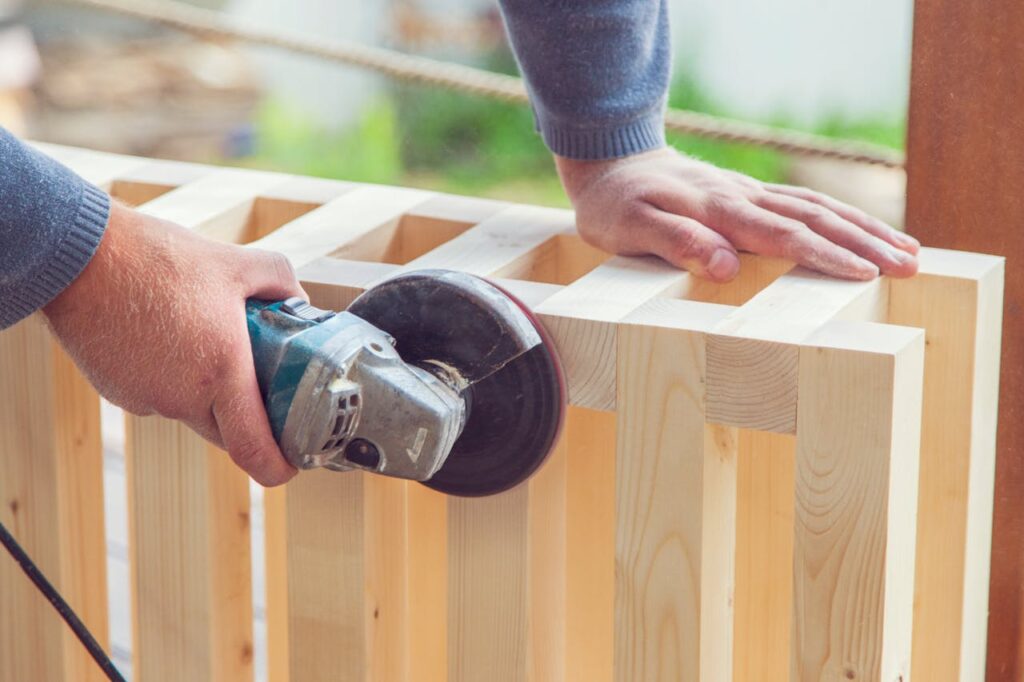
Here’s the thing—small repair hacks aren’t just about fixing stuff. They’re about learning, laughing, and pretending you totally meant for that patch to look “rustic.”
So grab your tools, put on your old work gloves, and tackle those small projects like a pro who knows the real secret of DIY: duct tape and determination.













